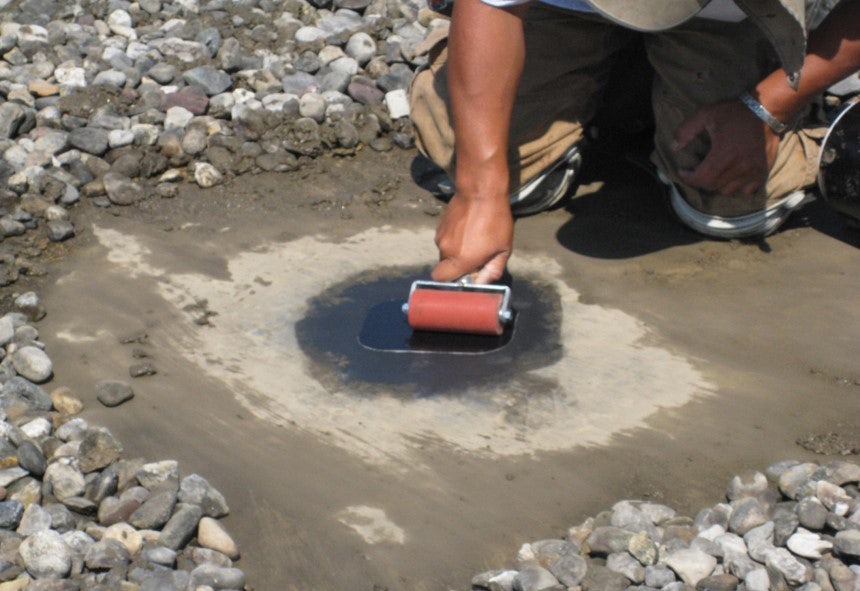The process of choosing, applying and maintaining flat roofing materials doesn’t have to be difficult. With our handy buyer’s guide, you can learn the different types of roofing materials and discover what you can do to ensure it is applied and maintained effectively in the long term.
Table of contents:
- What is flat roofing?
- Flat roofing types
- Eco-friendly option
- Advantages
- Disadvantages
- Where to install
- Installation
- Insulating
- Waterproofing
- Escape Building Regulations
- Maintenance
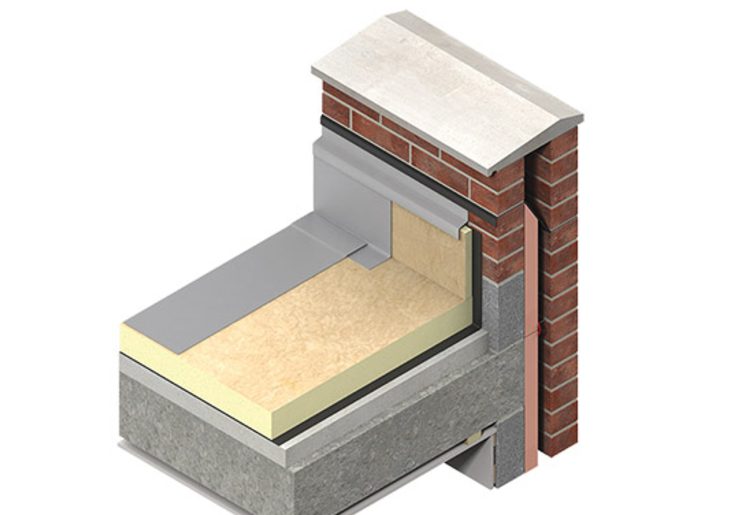 What is flat roofing?
What is flat roofing?
A flat roof is ideal for those who want something low-cost, space-saving and many other reasons that could be decorative or similar. They are commonly used on small-scale structures (e.g. extensions). However, larger structures can benefit from such a solution.
Two of the main ways to describe the types of roofing is by using the terms ‘cold’ roof and ‘warm’ roof. You can identify which type is which by checking where the insulation is located. Traditionally, a cold roof has insulation located between the joists and a warm roof has insulation located above the joists.
Check out this guide to learn more about joists


Types of flat roofing
There are a wide variety of flat roofing materials to choose from. Each one comes with various, cost choices and much more. Discover what is available and how your chosen type can be useful to you.
Felt
Felt is slowly becoming a common favourite amongst those with flat roof properties. The two main types we supply here at Roofing Superstore are ‘Torch-on’ and ‘Self-Adhesive’.
1. Torch-on
Torch-on felt is a low-maintenance product that can last around a decade with proper care. Using the three-layer system, torch-on roof felt has increased durability. The main thing to consider is that torch-on felt roofing has a dangerous application process. So it is important you have someone take care of it who knows the standards of torch-on felt roofing safety.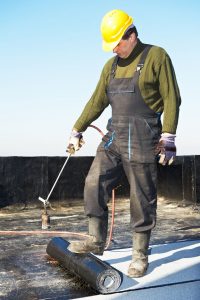
2. Self-adhesive
Self-adhesive felt is a suitable option for those with small DIY projects in mind. Instead of using naked flames, felt roofing can be used simply by peeling off the release film on its underside and placing it onto the substrate for self-bonding.
You can find out more about various roof felts by checking out the Roofing Felt Buyer’s Guide.
EPDM rubber
EPDM rubber roofing can last as long as 50 years because of its durable properties. Prior to the installation of this type, you should ensure that any bitumen leftover (if part of the original roof) is removed or covered. This is because the material has a poor effect on the EPDM rubber membrane. So removing it will ensure performance stays at a high standard.
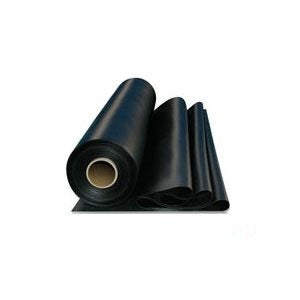
You can discover more information about EPDM roofing by taking a look at our complete guide.
Fibreglass
The fibreglass roof (aka GRP flat roof) is one that is greatly admired for its strength, easy installation and low maintenance. They consist of a piece of marine-grade, or similar plywood, covered by a resin. Fibreglass netting is then laid on top, followed by another layer of resin. Once the resin has cured, a topcoat is applied. This ensures the roof is weatherproof.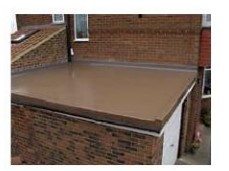
You can discover how to lay a fibreglass roof using our 4-step guide.
Green flat roofing
Green roofs, also known as sedum, are growing very popular in the UK and on a global scale. A lot of this is because they are more environmentally friendly in the long run.
A green roof is essentially a ‘living roof’. This is because it is made up of vegetation, which is self-sufficient, able to grow and develops to protect properties. It also supports the conversion of carbon dioxide to oxygen, meaning built-up areas can benefit greatly if using this type of roofing.
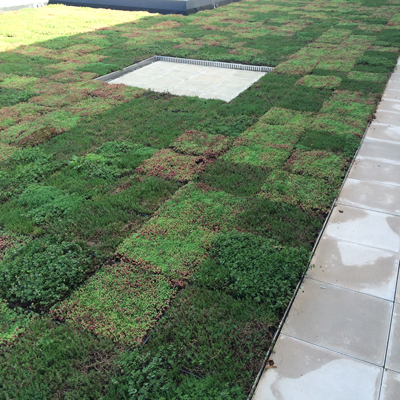
You can find out more about green roofing via our guide to sedum roofing.
What are the benefits of flat roofing?
Cost
 Flat roofing is known to be more cost-effective. Yes, they vary in price, but overall flat roofing options are much more affordable. This is because they come with a lower risk regarding the installation and they have little complication when it comes to repairs.
Flat roofing is known to be more cost-effective. Yes, they vary in price, but overall flat roofing options are much more affordable. This is because they come with a lower risk regarding the installation and they have little complication when it comes to repairs.
Installation
A flat roof is quick and easy to install. Some may require additional support when it comes to safety (i.e torch-on roofing), but many can be installed with ease.
Usability
When considering the installation of a flat roof, you can decide on its use. Unlike a pitched roof, you can apply it for use as decking, a walkway and other various uses. This can be ideal for those who want it as a lounging or gardening space.
It also means that those who live or work inside taller properties do not have to worry about pitched roofs blocking their views. As well as this, as a result, more natural lighting can be achieved.
Maintenance
Repairing a flat roof is much easier. Inspecting them takes minimal effort. Due to their lifespans, a flat roof can be repaired quickly and easily without major issues – making this a less expensive solution for the long term.
What are the disadvantages of flat roofing?
Appearance
One of the main issues with flat roofing is that it isn’t considered a luxury form of roofing style. Especially if you’re planning to put it on a building amongst residential homes as it can stick out with its basic design.
Insulation
Less roofing material means less insulation opportunity. Although they don’t always require regular repairs, this issue does mean that it will be affected by more severe temperatures.
Stability
Flat roofs struggle with weight. As such, the building will need to be improved structurally around other areas to ensure it can withstand heavier weights that affect the roofing.
Drainage
 Due to their flat nature, flat roofing doesn’t drain as well as the pitched version. This subjects it to ‘ponding’ issues if the water is left in a puddle on the roof for 48 hours or more. This can be repaired however by ensuring gutters and drains are maintained and blockages are cleared as soon as possible. It is also vital you make sure the installer that initially applies the flat roofing is an experienced professional. This can reduce issues in the long run.
Due to their flat nature, flat roofing doesn’t drain as well as the pitched version. This subjects it to ‘ponding’ issues if the water is left in a puddle on the roof for 48 hours or more. This can be repaired however by ensuring gutters and drains are maintained and blockages are cleared as soon as possible. It is also vital you make sure the installer that initially applies the flat roofing is an experienced professional. This can reduce issues in the long run.
You can find out more about common flat roofing problems by reading through our guide.
Where can flat roofs be used?
A flat roof can be placed on residential or commercial buildings depending on what is needed. It can be great for improving the amount of internal space needed in a property. You’re not having to work around a complicated design and save much less on the application.
Installing a flat roof
Installing a flat roof will vary depending on the type of roof material you are applying. Once you have the type of roofing available, you can check out how to apply the roofing by following our dedicated guides or by getting professional support.
Insulating a flat roof
Insulating a flat roof of a residence should be done so between and over joists as required. Should the ceiling height of the roof be affected, a lower performance may be appropriately chosen.
It’s important to know that there are specialised insulation solutions that can be placed above waterproofing. This, however, is typically restricted to commercial and industrial buildings.
Waterproofing a flat roof
If you’re in a location where wet weather is more common, it’s worth making sure you waterproof the flat roof as soon as possible. In the long term, this can ensure cracks, puddles and leaks don’t appear regularly over its lifetime.
With rubber roofs, you can find out how to waterproof them using our handy guide.
Flat roof escape
If you decide to have a flat roof as an escape means of escape, you must ensure the following:
- It is part of the same building where the escape is being made.
- The route across the roof leads to a storey exit or external escape route.
- Supporting structure and openings within 3m of the escape route should be of a fire-resisting construction with a minimum of REI 30.
Following these Building Regulations means you are complying with legal terms, so it is important you follow them accordingly.
How to repair a flat roof
As with any construction-based project, reparations may be required over the course of their lifetime. Depending on the type of roof, repairs can be difficult or easy.
Common roof types that will need repair more than others include felt roofing. Patching up will take up most of the work, but if repairs are becoming more and more frequent it might be time for a full roof replacement.
Keynotes about flat roofing repair
It’s important to know that when you choose to repair a flat roof, not all instances may require an application for approval. However, if insulation needs replacing then you may have to upgrade it to a warm roof to ensure there is a reduced heat loss factor. You will also need approval for such a repair if:
- You’re making changes to the structure.
- The new roofing performance is vastly different in regard to fire protection.
- 25% or more of the roof area is being repaired or replaced.
If you would like more information, you can give us a call using the number 01752 692 760 or open the chat box in the bottom right to speak to our experts.



